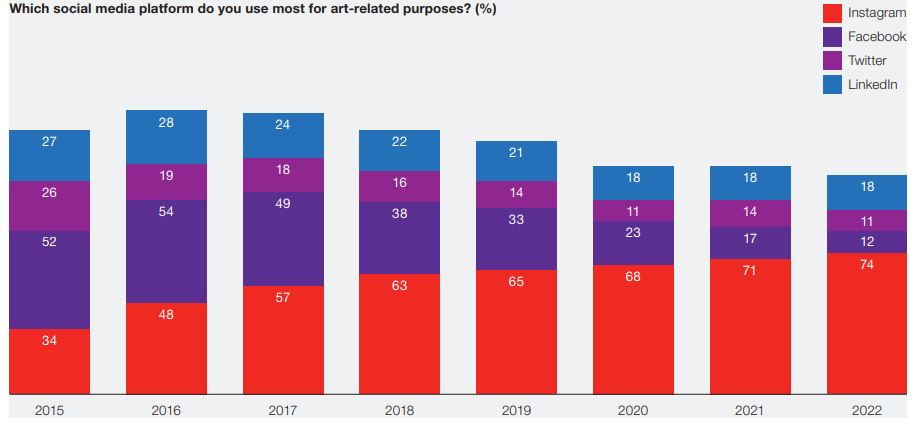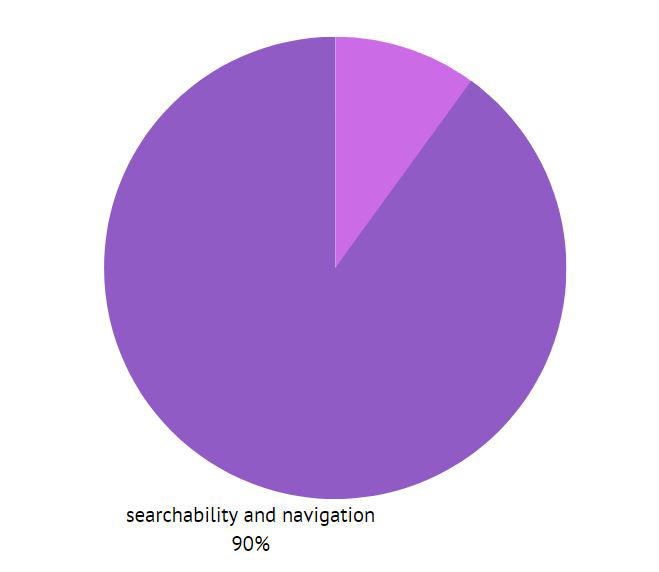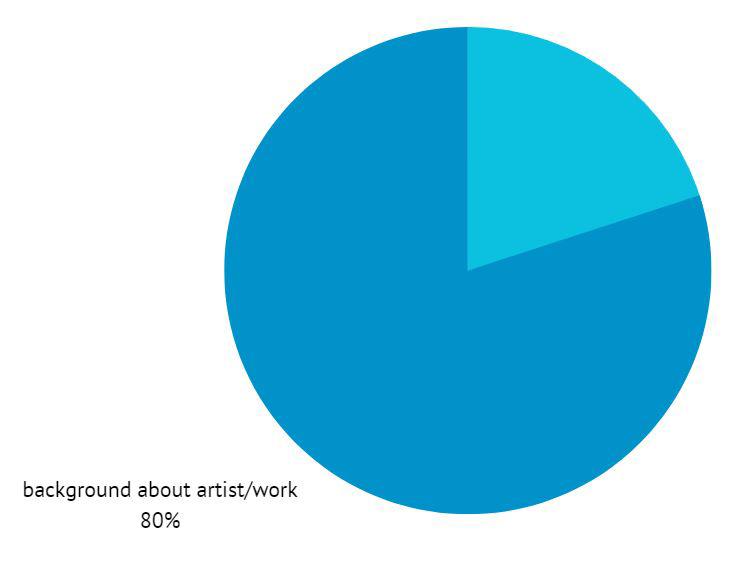Understanding the Use of Social Media for Artists and Galleries Today
In today’s digital age, the art world has surpassed the traditional gallery and exhibition model. In addition to brick-and-mortar and the ubiquity of art fairs, artists and galleries have embraced online platforms and social media as essential tools for showcasing and promoting their work. The convenience and wide reach of online platforms have transformed the way artists and galleries connect with their audiences, making them an invaluable asset for the art community—not only for for driving sales, but for educating audiences as well.

image courtesy Hiscox
The Statistical Evidence
Social media’s impact on art is hardly refutable. According to Artsy’s Art Industry Trends report for 2023, 38% percent of the galleries surveyed saw an increase in their online art sales compared to 2022. Similar reports have been coming in for the past decade. Since 2012, the global insurance agency Hiscox has been conducting an Online Art Trade Report tracking consistent increases in annual online art sales. In 2022, 78% of the respondents stated they have purchased an artwork online in the last 12 months vs. 38% stating the same 10 years earlier.
Where the Influence is Coming From
Social media platforms have not only emerged as powerful tools chosen by artists and galleries to connect with a global audience, but have also become an important place for viewers or collectors to see and discover art. Of the platforms used by the the art world, Instagram dominates with 74% preferring it over all others. This increases to 84% for younger buyers.
Artsy’s 2023 report shows similar findings. When asked which methods galleries used for artwork sales, a combined 74% reported that Online marketplace / e-commerce and Instagram have seen the most growth in the last year.
Who and What is Influencing
Having a presence on platforms like Instagram has clearly impacted art’s influence and exposure. Of those in the art world who hold the most influence, 78% of online art buyers cite artists as the main influencers. 70% said the same for galleries and 62% for museums.
As far as the art itself, in an earlier Hiscox report from 2019, painting accounted for 83% of sales, prints were 77%, drawings were 44%, 51% photographs, 43% sculptures, and 12% accounted for new media.
Obstacles and Challenges
The same reports have studied the habits of collectors and the conditions that create buyer hesitation. In 2019, 90% of those reporting stated that searchability and navigation were crucial factors in promoting buyer confidence. Surprisingly, only 50% thought that art branding was important, but 80% saw that background information about the artist/object increases buyer confidence, and 82% agreed that information about the art was critical for making decisions to purchase art online.




The Takeaway
It’s dauntingly clear that having an accesible online presence on platforms like Instagram is crucial for gaining art exposure today. This is the largest area where activity is growing right now for the viewing, education, and sales of art.
What the data also tells us is that not only is having a social media presence important, but so is the information that you provide. Branding is important to some, but evidently what is even more important is that audiences have information, details, and background about the work you’re showing and the artist who makes it.
